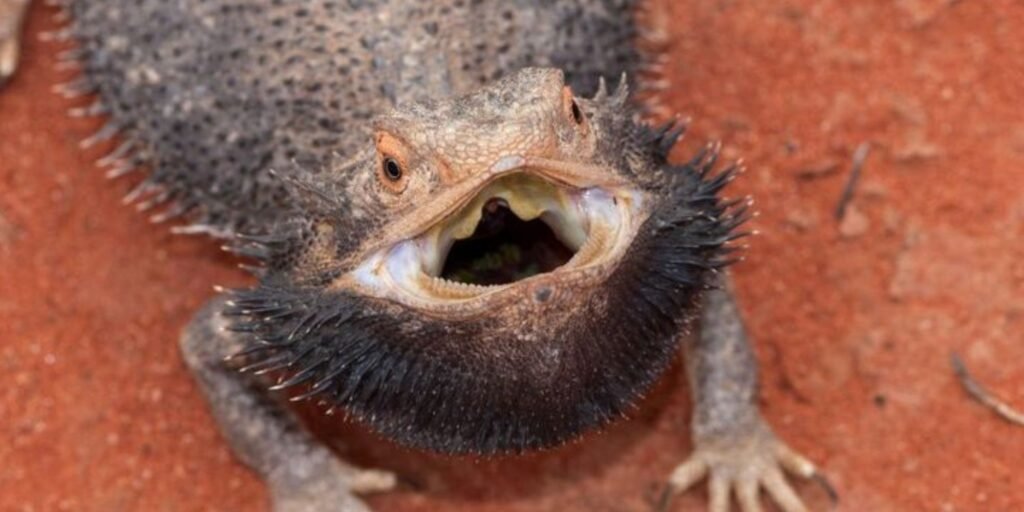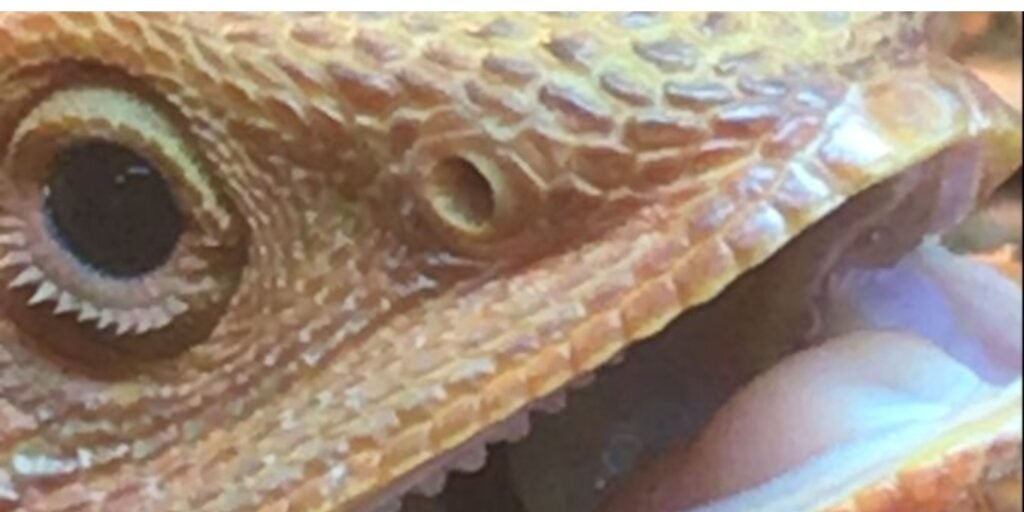Bearded dragons are captivating creatures; they bring unique personalities and quirks to our homes daily. While we often marvel at their vibrant colors and fascinating behaviors, one aspect that deserves attention is something more hidden: their teeth. Yes, bearded dragon teeth play a crucial role in the overall health of these reptiles. Whether you’re a new owner or a seasoned enthusiast, understanding how to care for your dragon’s dental needs is essential.
In this post, we’ll dive deep into everything you need to know about bearded dragon teeth— from their anatomy and development to proper maintenance techniques. You might discover some surprising facts along the way! So, let’s embark on this informative journey to help ensure your scaly friend maintains a healthy smile.
Outline for “Everything You Need to Know About Bearded Dragon Teeth: Care and Maintenance”

Bearded dragon teeth are more than just a part of their anatomy; they play a vital role in their health and well-being. Understanding how these teeth develop can help you better care for your pet. From the moment they hatch, bearded dragons grow chompers, each designed for specific functions.
Many myths surround reptile dental care, leading to confusion among owners. Dispel these misconceptions by learning the truth about what bearded dragons need regarding oral hygiene and maintenance. This knowledge is crucial for preventing potential dental issues that could arise over time.
Proper cleaning techniques can make all the difference in keeping your dragon’s mouth healthy. Signs of dental problems may not always be evident at first glance, but knowing what to look for will empower you as an owner to take proactive steps toward your pet’s happiness and health.
Introduction
Bearded dragons are fascinating reptiles that have captured the hearts of many pet owners. One crucial aspect of their care often goes unnoticed: their teeth. Understanding bearded dragon teeth is essential for ensuring your pet’s overall health and well-being.
These creatures possess a unique dental structure vital to their feeding habits and lifestyle. Learning about how these teeth develop, maintain, and function can help you become a more informed owner.
Proper care and attention to dental hygiene can prevent various issues. From brushing techniques to recognizing signs of trouble, being proactive with your bearded dragon’s dental health ensures they live a happy life by your side.
Anatomy of Bearded Dragon Teeth
Bearded dragon teeth are unique compared to those of mammals. They have a set of small, peg-like teeth that allow them to grip and consume their food effectively. These teeth are not rooted in sockets like mammalian teeth; they sit on the jawbone, making them more susceptible to wear.
The dental structure includes upper and lower jaws filled with sharp tools. Bearded dragons use their teeth primarily for grabbing prey, such as insects or greens, rather than chewing. Their specialized anatomy supports a diet that requires tearing rather than grinding.
As bearded dragons grow, their teeth naturally shed and regenerate throughout their lives. This process is essential for maintaining dental health and adapting to changes in diet or age-related factors affecting feeding habits.
Development of Bearded Dragon Teeth

Bearded dragon teeth develop throughout their lives, starting from infancy. Unlike mammals, these reptiles do not have a set of baby teeth that fall out as they grow. Instead, bearded dragons possess polyphyodont dentition, meaning they can continually replace their teeth over time.
As hatchlings, bearded dragons begin with small, sharp teeth designed to grip and tear food. These initial teeth help them consume insects and other prey essential for growth. As they mature into adults, the size and shape of their teeth may change to accommodate a more varied diet.
Regular shedding plays a key role in this development process. Bearded dragons naturally lose worn or damaged teeth as new ones emerge beneath the gum line. This ability ensures that their dental health remains optimal throughout their lifespan, allowing them to adapt to dietary changes as needed.
Common Myths about Bearded Dragon Teeth
Many believe that bearded dragons don’t have teeth, but this is a common misconception. In reality, these reptiles possess hundreds of tiny, sharp teeth called acrodont teeth. They may not look like the conventional teeth we’re used to seeing in mammals, but they play a crucial role in their ability to eat and consume food.
Another myth suggests that bearded dragon teeth never need care or maintenance. While their dental structure is resilient, neglecting oral hygiene can lead to serious health issues. Bearded dragons benefit from routine check-ups and proper cleaning techniques like any pet.
Some owners also think that if their bearded dragon shows no pain or discomfort, its dental health must be fine. This is only sometimes true; many dental problems can go unnoticed until they become severe. Regular monitoring is essential for ensuring your pet’s well-being and happiness.
Proper Cleaning and Care Techniques
Maintaining your bearded dragon’s dental health is crucial for its overall well-being. Regularly inspect their teeth for any signs of plaque or buildup. A good start method is gently wiping their teeth with a soft, damp cloth or a cotton swab. This simple practice can help remove food particles and prevent issues.
In addition to physical cleaning, appropriate foods can help maintain healthy teeth. Crunchy vegetables and specially formulated commercial diets can promote natural chewing action, which helps clean teeth naturally while providing essential nutrients.
Remember hydration! Ensuring your bearded dragon has access to fresh water supports general health and aids in oral hygiene. Keeping their environment clean will further reduce the risk of bacteria that could lead to dental problems. Remember, a little effort goes a long way in keeping those bearded dragon teeth sparkling!
Signs of Dental Issues in Bearded Dragons
Bearded dragon teeth’ health is crucial to their overall well-being. Watch for signs that may indicate dental problems. If your bearded dragon is reluctant to eat or shows changes in appetite, it could indicate an underlying issue with its teeth.
Another red flag is excessive drooling or saliva around the mouth. This can suggest infection or an injury to the dental area. Additionally, keep an eye on any unusual behavior, like rubbing one’s face against objects; this might signal discomfort caused by dental issues.
Discoloration, such as yellowing or dark spots on the teeth, can also hint at potential problems. Regular check-ups and observance will help ensure your bearded dragon maintains healthy teeth and gums.
FAQs about Bearded Dragon Teeth
Bearded dragon teeth often raise questions among owners. One common query is whether these reptiles lose their teeth. Yes, they do! Bearded dragons can shed their teeth just like other species. This process typically occurs as they grow and age.
Another frequent concern relates to diet. Can bearded dragons eat hard foods? While they can handle some harder items, ensuring the food is appropriately sized and not too tough is essential, which could lead to dental issues or damage.
Many wonder about the signs of tooth decay or infection. Look for symptoms like swelling in the mouth or reluctance to eat. If you notice any unusual behavior regarding your bearded dragon’s dental health, consulting a vet familiar with reptiles is crucial for timely care.
Conclusion

Bearded dragons are fascinating creatures with unique dental needs. Understanding their teeth and how to care for them is essential for any owner. Knowledge is key, from the anatomy of their teeth to common myths surrounding dental health.
Proper care techniques can help prevent issues, keeping your bearded dragon healthy and happy. Awareness of signs indicating dental problems means you can act quickly if necessary.

